

EXPLORE BY TOPIC:
  Our top 10 resources
Our top 10 resources
  Childhood / Early Life
Childhood / Early Life
  Chronic Stress
Chronic Stress
  Education
Education
  Food Security
Food Security
  Genetics
Genetics
  Jobs & Work
Jobs & Work
  Housing / Neighborhoods
Housing / Neighborhoods
  Income & Wealth
Income & Wealth
  Race / Racism
Race / Racism
  Social Inclusion
Social Inclusion
  Policy & Change
Policy & Change





Buy the DVD
e-Newsletter
FAQs
Contact Us
Site Map
Home

|
 |


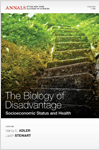 Childhood socioeconomic status and adult health Childhood socioeconomic status and adult health 
Sheldon Cohen, Denise Janicki-Deverts, Edith Chen, and Karen A. Matthews This article discusses the evidence supporting the link between childhood and adolescent SES and adult health, and explores different environmental, behavioral, and physiological pathways that might explain how early SES would influence adult health. THe authors also address the ages when SES exposures matter most for setting adult patek philippe replica health trajectories as well as the role of exposure duration in SES influences on later health. While early childhood exposures seem to be potent predictors of a range of health outcomes, the authors emphasize that later childhood and adolescent exposures are risks for other health outcomes. |
 |
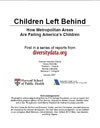 Children Left Behind: How Metropolitan Areas Are Failing America's Children (pdf) Children Left Behind: How Metropolitan Areas Are Failing America's Children (pdf) 
REPORT from DiversityData.org, January 2007
This report finds that across metropolitan America, black and Hispanic children face particularly severe challenges. Inequalities go far beyond what can be explained by income differences, as poor black and Hispanic children tend to encounter environments considerably worse than poor white and Asian children. Yet the very conditions that contribute to these inequalities suggest some possible policy solutions.
The analysis contained in this report is derived from diversitydata.org, a website using data from multiple sources to profile U.S. metropolitan areas's indicators on many dimensions of well-being, including housing, neighborhood conditions, residential integration, education and health. |
 |
 Closing the Black-White Gap in Birth Outcomes: A Life-course Approach Closing the Black-White Gap in Birth Outcomes: A Life-course Approach 
Ethnicity & Disease
In the United States, Black infants have significantly worse birth outcomes than White infants. Over the past decades, public health efforts to address these disparities have focused primarily on increasing access to prenatal care, however, this has not led to closing the gap in birth outcomes. This article proposes a 12-point plan to reduce Black-White disparities in birth outcomes using a life-course approach. |
 |
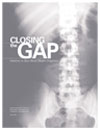 Closing the Gap: Solutions to Race-Based Health Disparities Closing the Gap: Solutions to Race-Based Health Disparities 
REPORT from the Applied Research Center and Northwest Federation of Community Organizations, 2005 Unhealthy neighborhoods and lack of health care contribute to poor health, and they are unequally distributed. tuzla escort People of color are exposed to greater threats and have less access to quality care. This report outlines causes of inequities as well as promising initiatves around maslak escort the country to combat them. maslak escort One chapter focuses on Tohono O'odham Community Action (www.tocaonline.org) an organization co-founded by Terrol Dew Johnson, who appears in the episode "Bad Sugar."
|
 |
 College-Educated Fare Better When Cancer Strikes College-Educated Fare Better When Cancer Strikes 
NEWS ARTICLE, Steven Reinberg, HealthDay News, July 8, 2008 A report published July 8 in the Journal of the National Cancer Institute found that, while outcomes from the four leading cancers overall improved between 1993 and 2001, most of the decline in deaths occurred among men and women with college degrees. Among women with fewer than 12 years of education, only white women showed a signicant decline in mortality from breast cancer. taksim escort escort bayan taksim escort umraniye escort |
 |
 Comfort Food, For Monkeys Comfort Food, For Monkeys 
NEWS ARTICLE, New York Times, May 20, 2008 Research on rhesus monkeys found that subordinant monkeys were more likely than dominant monkeys to overindulge in high-calorie snacks when they were made available, and more likely to "binge" on this food at night. This and other studies with humans provide emperical evidence for what many of us already know from personal experience: we are more likely to eat poorly when we're under stress.audemars piguet replica |
 |
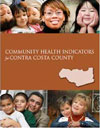 Community Health Indicators for Contra Costa County 2007 Community Health Indicators for Contra Costa County 2007 
REPORT from Contra Costa Health Services
If you like forever classic fake watches, you cannot miss the uk top quality cheap replica rolex watches canada.
What kinds of perfect replica watches are worth having? US 1:1 Best Replica Watches Sales with Real Swiss Movement.
|
 |
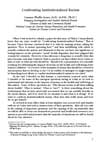 Confronting Institutionalized Racism (pdf) Confronting Institutionalized Racism (pdf) 
ARTICLE by Camara Phyllis Jones, Phylon 2003 A conversational piece aimed at understanding and intervening on the impacts of racism on the health and well-being of the U.S. population. Some questions addressed: Why discuss racism at all when talking about health? What is racism? What is “race”? Is there something about the environment that we can usefully describe as the "racial climate," and if so, how do we measure it and what is it doing? If we want to confront institutionalized racism, what does that really mean and how do we get started? |
 |
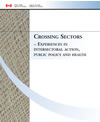 Crossing Sectors: Experiences In Intersectoral Action, Public Policy And Health Crossing Sectors: Experiences In Intersectoral Action, Public Policy And Health 
Public Health Agency of Canada This paper represents the first phase of a Canadian initiative on intersectoral action for health and provides an overview of approaches to intersectoral action at the global, sub-regional, national, sub-national, and community levels. It is intended to contribute to the World Health Organisation’s Commission on Social Determinants of Health (SDH) |
 |
 Designed for Disease: The Link Between Local Food Environments and Obesity and Diabetes Designed for Disease: The Link Between Local Food Environments and Obesity and Diabetes 
"Designed for Disease: The Link Between Local Food Environments and Obesity and Diabetes" examines the relationships between retail food environments, obesity and diabetes, and community income. The study demonstrates that people who live near an abundance of fast-food restaurants and convenience stores compared to grocery stores and fresh produce vendors, have a significantly higher prevalence of obesity and diabetes.
To help reduce the prevalence of obesity and diabetes, the authors urge state and local lawmakers to enact public policies to make healthy foods more readily available. These policies include providing retail incentives, promoting smaller-scale markets that imitatie horloges sell healthy foods, maximizing the opportunities that come with the new WIC food package, using zoning to limit the number of fast-food restaurants in overburdened communities, and requiring nutritional information on restaurant menus. |
 |
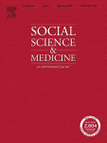 Differences in the self-reported racism experiences of US-born and foreign-born Black pregnant women Differences in the self-reported racism experiences of US-born and foreign-born Black pregnant women 
Differential exposure to minority status stressors may help explain differences in United States (US)-born and foreign-born Black women's birth outcomes. Self-reported prevalence of personal racism and group racism was significantly higher among US-born than foreign-born Black pregnant women, with US-born women having 4.1 and 7.8 times the odds, respectively, of childhood exposure. Differential exposure to self-reported racism over the life course may be a critically important factor that distinguishes US-born Black women from their foreign-born counterparts. |
 |
 Differing Birth Weight among Infants of U.S.-Born Blacks, African-Born Blacks, and U.S.-Born Whites Differing Birth Weight among Infants of U.S.-Born Blacks, African-Born Blacks, and U.S.-Born Whites 
SCHOLARLY ARTICLE by Richard J. David and James W. Collins, New England Journal of Medicine, 1997 The David and Collins article, cited in When the Bough Breaks, that finds that African-born Black women living in the U.S. had similar delivery outcomes to white American women, while U.S.-born Black women gave birth to babies of significantly lower average birth weight. This relationship still existed when other socioeconomic factors were controlled for. |
 |
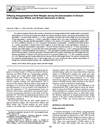 Differing Intergenerational Birth Weights among the Descendants of US-born and Foreign-born Whites and African Americans in Illinois Differing Intergenerational Birth Weights among the Descendants of US-born and Foreign-born Whites and African Americans in Illinois 
James W. Collins, Jr., Shou-Yien Wu, and Richard J. David in the American Journal of Epidemiology The authors analyzed Illinois vital records to determine the intergenerational birth weight patterns among the descendants of US-born and foreign-born White and African-American women. Among the descendants of generation 1 European-born White women, generation 3 females had a birth weight 45 g more than that of their generation 2 mothers . Among the descendants of generation 1 US-born African-American women, generation 3 females had a birth weight 17 g more than that of their generation 2 mothers. Among the descendants of generation 1 African/Caribbean-born women, generation 3 females had a birth weight 57 g less than that of their generation 2 mothers; generation 3 females had a 40% greater moderately low birth weight rate than did their generation 2 mothers: 9.6% percent versus 6.7% percent. Maternal age and marital status did not account for the birth weight trends. The authors conclude that the expected intergenerational rise in birth weight does not occur among the direct female descendants of foreign-born African-American women. |
 |
 Disparities In Infant Mortality Not Related To Race, Study Finds Disparities In Infant Mortality Not Related To Race, Study Finds 
Science Daily The cause of low birth weights among African-American women has more to do with racism than with race, according to a report by an associate professor of pediatrics at the University of Illinois at Chicago. Minority women are subject to stress caused by perceived racial discrimination, the researchers said. They asked the mothers if they had ever been treated unfairly because of their race when looking for a job, in an educational setting or in other situations. Those who felt discriminated against had a twofold increase in low birth weights. And for those who experienced discrimination in three "domains," the increase was nearly threefold. |
 |
 Disparities in infant mortality: What's genetics got to do with it? Disparities in infant mortality: What's genetics got to do with it? 
SCHOLARLY ARTICLE by Richard David and James Collins, American Journal of Public Health, 2007 Since 1950, dramatic advances in human genetics have occurred, racial disparities in infant mortality have widened, and the United States' international ranking in infant mortality has deteriorated. The quest for a "preterm birth gene" to explain racial rolex repliky differences is now under way. Scores of papers linking polymorphisms to preterm birth have appeared in the past few years. Is this strategy likely to reduce racial disparities? A review of broad epidemiological patterns contradicts the genetic theory of race and points toward social mechanisms.
A subscription is required to access the full article online. |
 |
 Dwelling Disparities: How Poor Housing Leads to Poor Health Dwelling Disparities: How Poor Housing Leads to Poor Health 
SCHOLARLY ARTICLE by Ernie Hood, Environmental Health Perspectives, May 2005 Recently, the scope of environmental health science has broadened to encompass how the built environment affects human health. Many groups are focusing research efforts on how inadequate housing in particular contributes to poor health. Low-income and minority populations are known to be especially at risk for housing-related adverse health effects. Yet fully elucidating the links between the built environment and health disparities is a huge task, one that is requiring new tools and research methods. Community groups are increasingly being brought into the research loop to ensure that efforts to identify and reduce health problems are appropriately targeted. |
 |
 Early aging tied to chronic stress Early aging tied to chronic stress 
NEWS ARTICLE by David Perlman, San Francisco Chronicle, 2004
Researchers at UC San Francisco say they have found the first direct evidence that severe and chronic emotional stress can age people biologically. |
 |
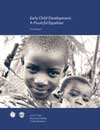 Early Childhood Development Early Childhood Development 
REPORT from WHO Commission on the Social Determinants of Health, July 2007
Well established evidence illustrates that opportunities provided to young children are crucial in shaping lifelong health and development status.
This is an interim report, submitted by the Early Child Development Knowledge Network to develop the Commission's final report in May 2008.
|
 |
 Editorial: Unemployment and health Editorial: Unemployment and health 
SCHOLARLY ARTICLE by Danny Dorling, BMJ March 2009
Beginning with evidence that unemployment is bad for health and that welfare to work (when the work is low-paid and demeaning) does little to help, this editorial recommends further government support for higher education and quality apprenticeship-style positions.
|
 |
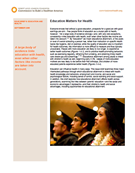 Education Matters for Health Education Matters for Health 
Robert Wood Johnson Foundation Education can influence health in many ways. This issue brief examines three major interrelated pathways through which educational attainment is linked with health: health knowledge and behaviors; employment and income; and social and psychological factors, including sense of control, social standing and social support. In addition, this brief explores how educational attainment affects health across generations, examining the links between parents’ education—and the social and economic advantages it represents—and their children’s health and social advantages, including opportunities for educational attainment. |
 |
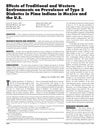 Effects of Traditional and Western Environments on Prevalence of Type 2 Diabetes in Pima Indians in Mexico and the U.S. Effects of Traditional and Western Environments on Prevalence of Type 2 Diabetes in Pima Indians in Mexico and the U.S. 
Diabetes Care The much lower prevalence of type 2 diabetes and obesity in the Pima Indians in Mexico than in the U.S. indicates that even in populations that may be genetically prone to these conditions, their development is determined mostly by environmental circumstances, thereby suggesting that type 2 diabetes is largely preventable. This study provides compelling evidence that changes in lifestyle associated with Westernization play a major role in the global epidemic of type 2 diabetes. |
 |
 Employment Conditions Employment Conditions 
REPORT from the WHO Commission on the Social Determinants of Health, 2007
The report helps to develop measures to clarify how different types of jobs, threat of unemployment affect workers’ health.
This is an interim report, submitted by the Employment Conditions Knowledge Network to develop the Commission's final report in May 2008.
|
 |
 Enough to Make You Sick?: Something is Killing America's Urban Poor Enough to Make You Sick?: Something is Killing America's Urban Poor 
NEWS ARTICLE by Helen Epstein, New York Times, 2003 A newspaper article that looks at the epidemic of premature "aging" and death in the poor. Epstein explores the question, "Is there something deadly in the American experience of urban poverty itself?"
İstanbul Escort dünyanın en güzel şehirlerinden biridir ve burada bulunan escort kızlar da aynı şekilde güzeldir. şişli escort İstanbulun En Güzel Escort Kızları arasında, farklı özelliklere sahip birçok kadın bulunmaktadır.
kartal escort Rus escort kızları, müşterilerine unutulmaz bir deneyim yaşatmak için ellerinden gelenin en iyisini yaparlar.
Online web sitemizde en sexy şişli escort bayanlarını bulabileceğiniz kaliteli hertür fantazinize uygun escort bayanları sunuyoruz. escort Bayan web sitesi, maltepe escort bayan profilleri. | The most current tbilisi escort girls profiles on our Tbilisi Escort site.
Avrupa Yakası Merter Escort bayan olarak seks fantezileri merter escort bayanları. | Çapa Escort bayanları sexy escort kızlar çapa escort ilanlarına ulaşın. | Bahçeşehir Escort bayanları için doğru adres bahçeşehir escort bayanları sitesi. vip escort Esenler Escort bayan arkadaş bulmanız için en kaliteli esenler escort platformu. | İstanbul scort bayan ilanlarına 7/24 ulaşın. maltepe escort
Escort bayan en guncel istanbul escort kız profilleri. | İstanbul Escort bayan sitemizde en guncel istanbul escort kızların profilleri. | Escort bayanları bulabileceğiniz kaliteli uygun ümraniye escort bayanları sunuyoruz. kadıköy escort bayan partner ve escort bayanlar. | Gecelik saatlik escort bayan ilanlarına 7/24 ulaşın. Escort bayan en guncel taksim escort kızların profilleri.
maslak escorts ladies on our online website, we offer quality escort ladies suitable for your every fantasy, where you can find the sexiest maslak escorts ladies. Maslak Escorts Girls website, izmir escort female profiles.
Anadolu Yakası Ümraniye Escort olarak kendimi sizlere ümraniye escort kızları tanıtmak isterim. | mecidiyeköy escort | ümraniye escort | şirinevler escort
The latest istanbul escort girls profiles on our Istanbul escort site. istanbul escort site, taksim escorts lady and escort kartal escort girl profiles. |
 |
 Equitable Development Toolkit Equitable Development Toolkit 
A toolkit from PolicyLink Equitable development is an approach to creating healthy, vibrant, communities of opportunity. Equitable outcomes come about when smart, intentional strategies are put in place to ensure that low-income communities and communities of color participate in and benefit from decisions that shape their neighborhoods and regions. This online toolkit includes 28 tools to reverse patterns of segregation and disinvestment, prevent displacement, and promote equitable revitalization. |
 |
 Escaping from the Phantom Zone: social determinants of health, public health units and public policy in Canada Escaping from the Phantom Zone: social determinants of health, public health units and public policy in Canada 
SCHOLARLY ARTICLE by Dennis Raphael, Health Promotion International, March 2009
Despite the Canadian record of concern with the social determinants of health (SDOH), actual public health activities consistent with such an approach are sporadic at best. Canadian research and advocacy activities in the service of strengthening the SDOH are so divorced from everyday public policy activity, media discourse and public awareness as to metaphorically suggest that SDOH researchers and advocates exist in a Phantom Zone of irrelevance.
Why this might be the case and means of escaping from such irrelevance are presented. Implications for jurisdictions where the situation appears to be even worse—such as the USA—and for those where the situation may be somewhat better are also presented. |
 |
| « Prev 1 | 2 | 3 | 4 | 5 | 6 | 7 | 8 | 9 | 10 | 11 | 12 Next » |
|




